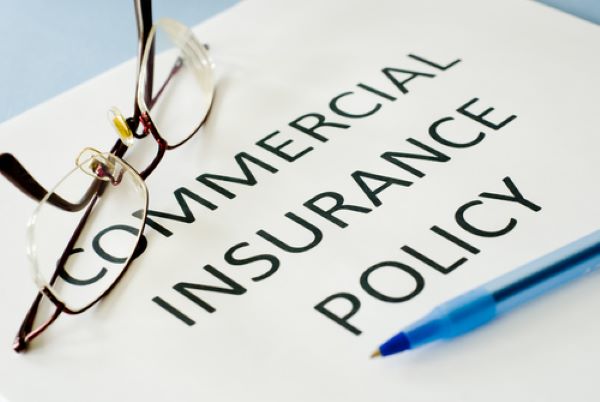 |
| By | March 1, 2024 |
With the rise of self-driving cars and ridesharing, the automotive landscape is experiencing a great shift. This change, while exciting, brings new risks for consumers. Traditional auto insurance may not offer enough coverage for these challenges. Here’s a look at the new risks and the efforts taken by auto insurance providers. Limitations of Current Auto Insurance Plans Traditional insurance covers only vehicle-related accidents, theft, and other common risks. This is because the core focus was to protect policyholders from the financial consequences. This approach has served the industry well for decades. However, modern insurers must reevaluate based on new risks and technologies. For example, self-driving car accident claims can become complex and time-consuming. As more people welcome car-sharing and ride-hailing, individually-owned vehicle insurance may no longer sufficient. This increases the need to accommodate vehicle usage and ownership patterns into insurance offerings. Emerging Risks and Their Impact The risk profiles for the auto insurance industry are gradually shifting towards new fronts. The following are some of the risks reshaping the landscape: 1. Autonomous and Electric Vehicles The accident and liability dynamics are changing in the era of electric vehicles (EVs) and self-driving cars. For example, it is becoming a challenge to identify the responsible…

With the rise of self-driving cars and ridesharing, the automotive landscape is experiencing a great shift. This change, while exciting, brings new risks for consumers. Traditional auto insurance may not offer enough coverage for these challenges.
Here’s a look at the new risks and the efforts taken by auto insurance providers.
Limitations of Current Auto Insurance Plans
Traditional insurance covers only vehicle-related accidents, theft, and other common risks. This is because the core focus was to protect policyholders from the financial consequences. This approach has served the industry well for decades. However, modern insurers must reevaluate based on new risks and technologies. For example, self-driving car accident claims can become complex and time-consuming. As more people welcome car-sharing and ride-hailing, individually-owned vehicle insurance may no longer sufficient. This increases the need to accommodate vehicle usage and ownership patterns into insurance offerings.
Emerging Risks and Their Impact
The risk profiles for the auto insurance industry are gradually shifting towards new fronts. The following are some of the risks reshaping the landscape:
1. Autonomous and Electric Vehicles
The accident and liability dynamics are changing in the era of electric vehicles (EVs) and self-driving cars. For example, it is becoming a challenge to identify the responsible party for an autonomous vehicle accident. The insurance carrier must determine whether the manufacturer, software developer, or owner is responsible. This complexity creates uncertainty for both insurers and policyholders.
With electric vehicles, battery malfunctions and charging infrastructure issues add new layers of potential damage. EV repair and replacement costs can be higher than traditional vehicles, impacting insurance claims and premiums.
2. Cybersecurity Threats
Cyber risks are increasing since vehicles have become more connected and technology-dependent. Hacking into a car’s systems could lead to personal data loss, physical harm, and other consequences. This introduces a new realm of risk requiring specialized coverage. While insurers proactively develop coverage options, it’s necessary to understand that data protection and cybersecurity need systemic changes to ensure comprehensive security.
3. Shared Mobility Services
The rise of shared mobility services blurs the lines between personal and commercial use. It introduces various potential risks, like:
- Vehicle Unfamiliarity: Drivers using rented cars that aren’t familiar might face higher accident risks.
- Frequent Driver Change: Frequent driver changes increase the possibility of wear and tear and accidents due to varying driving styles.
- Data Privacy Concerns: Platforms collect vast amounts of driver data, raising privacy concerns and potential cyberattacks.
This flexible coverage can vary depending on the platform and plan. This is because platforms and insurers partner to tailor coverage options for specific models.
4. Advanced Driver-Assistance Systems (ADAS)
While ADAS technologies enhance vehicle safety, they come with their own insurance challenges. The system includes features like adaptive cruise control, collision avoidance, and automatic parking assist. While all of them reduce accidents, they also complicate the ability to determine fault. For example, a technical malfunction can trigger a complex legal battle between the manufacturers, software developers, and drivers.
The Evolution of Auto Insurance
The car insurance industry is growing to meet these emerging risks. Insurers are embracing innovative strategies to keep up with this transformation. Here are some prominent steps from auto insurers:
1. Telematics
Insurers are using in-vehicle devices to collect real-time driving behavior data. These devices track metrics like speed, distance traveled, and braking patterns. This helps insurers understand risk more accurately. The data-driven approach enables them to create personalized pricing based on individual driving habits. It also incentivizes safer behavior on the road. Experts expect the role of in-vehicle devices to increase in the future. Therefore, policyholders can expect even more customized packages for self-driving cars and EVs.
2. Custom Plans
Usage-based insurance (UBI) has gained traction with the rise of devices. These policies adjust premiums based on actual driving data rather than traditional factors. By doing so, insurers can offer fairer rates and encourage safer driving practices among people. In addition, agencies are creating other options based on:
- Mileage: Policies that provide discounts based on low mileage usage.
- Type of Usage: Insurers offer discounts to policyholders with specific use cases, like ridesharing or commercial delivery services.
- Behavior: Some insurers also monitor driving behavior devices to offer lower rates for safe drivers.
3. Collaborations
Insurers are partnering with technology companies and car manufacturers to stay ahead of risks. These strategic initiatives help them obtain cutting-edge technology and data analytics tools. It also allows agencies to learn about the latest auto industry trends. The main goal of these insurers is to develop the expertise to create innovative insurance options. By working together, they can proactively address the challenges posed by this rapid evolution.
4. Regulatory Adaptations
Governments and regulatory bodies are working alongside the insurance industry to establish clear guidelines. These can help attribute liabilities in AV accidents and data privacy regulations for car-sharing platforms. Standardization in this area can ensure a smooth transition and consumer confidence. Regulatory changes take longer to adopt but are the key to creating a robust and inclusive insurance framework.
The Importance of Awareness
Awareness becomes increasingly crucial as the car insurance landscape evolves. It’s necessary for people to learn about emerging risks and advancements in insurance technology. This knowledge can help them make informed decisions when selecting insurance plans. Understanding the changing risk landscape can also encourage them to adopt safe driving practices.
If you’re looking for future-proof car insurance that covers all your requirements, contact Cell Brokerage. We have years of experience helping people get the best insurance plans. Call us or visit our website to explore our auto insurance options!









